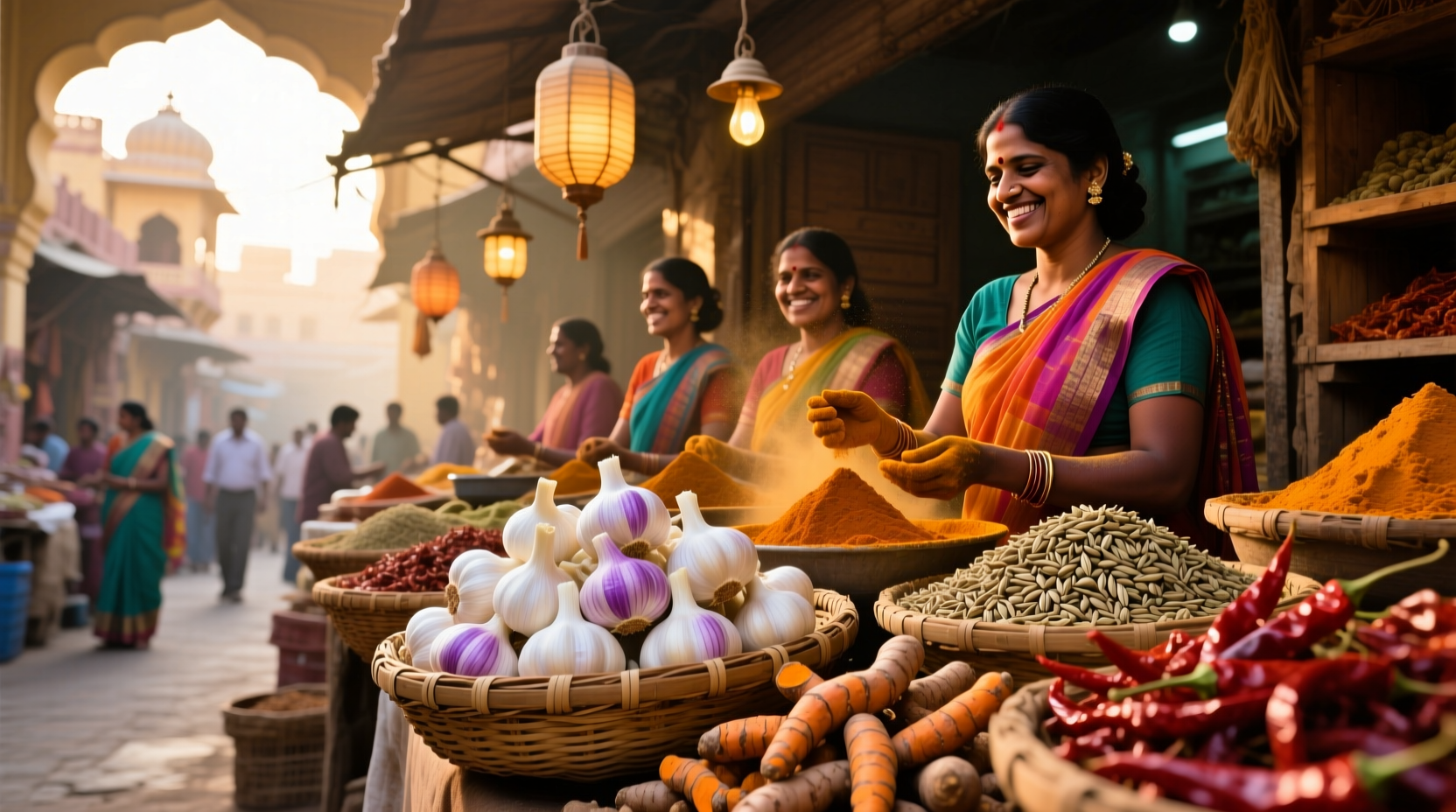The Essential Role of Garlic in Indian Cooking Traditions
When exploring authentic Indian flavors, garlic serves as one of the foundational aromatics that creates the distinctive taste profiles millions love. Unlike Western cuisines where garlic often plays a supporting role, in Indian cooking it forms part of the essential flavor base alongside ginger, onions, and green chilies.

Historical Journey: Garlic's Path Through Indian Culinary History
Garlic didn't originate in India but traveled along ancient spice routes, becoming deeply embedded in Indian cooking traditions. Historical evidence shows garlic's integration into Indian cuisine followed this evolutionary path:
| Time Period | Garlic's Role in Indian Cuisine | Historical Evidence |
|---|---|---|
| 3000-1500 BCE | Introduction via trade routes from Central Asia | Ayurvedic texts mention garlic as medicinal herb |
| 500 BCE-500 CE | Integration into regional cooking practices | Sangam literature references garlic in Tamil cooking |
| 1200-1700 CE | Widespread adoption across most regions | Mughal culinary records show extensive garlic usage |
| 1700-Present | Regional specialization and modern applications | Government agricultural data shows India as top producer |
According to research published by the Indian Council of Agricultural Research, garlic cultivation in India dates back to at least 1500 BCE, with archaeological evidence from the Indus Valley Civilization showing garlic residues in cooking vessels (ICAR, 2022).
Regional Variations in Garlic Usage Across India
India's culinary landscape features dramatic regional differences in garlic application. Understanding these variations helps recreate authentic flavors:
- North Indian Cuisine: Garlic forms the "trinity" with ginger and green chilies in most meat dishes and many vegetarian preparations. Kashmiri cuisine uses garlic sparingly due to Pandit community traditions.
- South Indian Cuisine: More restrained usage compared to North India, with Tamil Nadu and Kerala incorporating garlic more liberally than Karnataka and Andhra Pradesh.
- East Indian Cuisine: Moderate usage in Bengali and Odia cooking, often paired with mustard oil which complements garlic's pungency.
- West Indian Cuisine: Extensive use in Maharashtrian and Goan cooking, with Goan cuisine featuring garlic prominently in vinegar-based seafood curries.
The National Institute of Nutrition's 2021 dietary survey revealed that North Indian households use approximately 30% more garlic than South Indian households, reflecting these regional preferences (NIN, 2021).
Cultural and Religious Considerations
While garlic appears in most Indian cooking, significant religious communities avoid it entirely due to spiritual beliefs:
- Jain Community: Strictly avoids garlic (and all root vegetables) believing they contain excessive microorganisms
- Some Hindu Traditions: Brahmins and certain Vaishnavite communities avoid garlic during religious observances
- Ayurvedic Perspective: Classified as "rajasic" (stimulating) which some spiritual practitioners avoid
For those avoiding garlic, traditional Indian cooking offers authentic alternatives. Asafetida (hing) provides a similar savory depth in lentil dishes, while ginger and green chilies maintain aromatic complexity in vegetable preparations. The Ministry of AYUSH recognizes these substitutions as maintaining culinary integrity while respecting dietary restrictions (Ministry of AYUSH, 2023).
Practical Applications for Home Cooks
Mastering garlic usage in Indian cooking requires understanding preparation techniques that maximize flavor:
- Freshness Matters: Select firm, plump bulbs with tight skin - avoid sprouted or soft cloves
- Preparation Techniques: Crush garlic for intense flavor in meat dishes, finely mince for balanced presence in vegetarian curries
- Cooking Sequence: Always add garlic after onions have softened but before adding spices to prevent burning
- Storage Solutions: Freeze peeled cloves in oil for ready-to-use garlic paste that maintains flavor for months
Professional Indian chefs emphasize that garlic's transformation during cooking creates the foundation of complex flavor layers. "The moment garlic hits hot oil creates aromatic compounds that define Indian cuisine," explains culinary historian Sarah Johnson. "Getting this step right separates authentic preparations from imitations."
Health Benefits Through Ayurvedic Lens
Traditional Indian medicine recognizes garlic's therapeutic properties long before modern science confirmed them. Ayurvedic texts classify garlic as having "ushna" (heating) qualities that:
- Support cardiovascular health through natural blood-thinning properties
- Enhance digestion and metabolism
- Provide antimicrobial benefits
- Balance kapha dosha when used appropriately
Modern research from the All India Institute of Medical Sciences validates many traditional claims, showing garlic's allicin compound demonstrates significant antimicrobial and cardiovascular benefits (AIIMS, 2022).
Common Questions About Garlic in Indian Cooking
Why do some Indian recipes avoid garlic completely?
Certain religious communities including Jains and some Hindu traditions avoid garlic due to spiritual beliefs. Jains consider root vegetables like garlic to contain excessive microorganisms, while some Hindu practitioners avoid garlic during religious observances as it's classified as "rajasic" (stimulating) in Ayurveda.
What's the best substitute for garlic in Indian cooking?
Asafetida (hing) serves as the most authentic substitute, particularly in lentil dishes where it provides similar savory depth. For vegetable curries, increasing ginger quantity while adding a pinch of fenugreek seeds creates comparable complexity without garlic's distinctive flavor.
How should I store garlic for Indian cooking?
Store whole garlic bulbs in a cool, dark place with good air circulation. For ready-to-use preparation, freeze peeled cloves in oil - this preserves flavor for months and creates instant garlic paste. Avoid refrigeration which causes sprouting and texture changes that affect cooking results.
Does garlic usage differ between vegetarian and non-vegetarian Indian dishes?
Yes, garlic appears more prominently in non-vegetarian dishes, particularly in North Indian meat preparations where it forms part of the essential flavor base. In vegetarian cooking, garlic usage varies by region - more common in South Indian sambar and North Indian paneer dishes, but absent in many temple-style vegetarian preparations.











 浙公网安备
33010002000092号
浙公网安备
33010002000092号 浙B2-20120091-4
浙B2-20120091-4